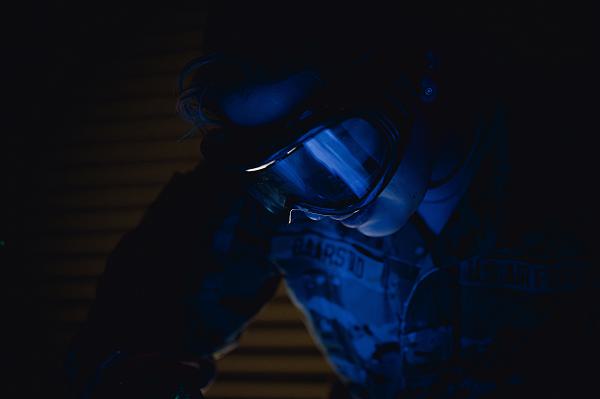
Tyndall Air Force Base, Florida. (June 15, 2024): In the fast-paced world of military aviation, aircraft parts suffer wear and tear that, if undetected, could cause a catastrophe. Aboard ships, there is little time to analyze aircraft parts for damage, especially for ‘destructive’ testing that requires dissolving materials into liquids. In this photo by Airman 1st Class Zeeshan Naeem, Airman 1st Class Gwynavere Baarstad, 325th Maintenance Squadron non-destructive inspection apprentice, checks a simulated aircraft part for damage. Traditional chemistry requires using acid to liquify a sample for analysis by Atomic Absorption or X-Ray Fluorescence (tools to measure the elemental content) that require the sample to be destroyed. Nondestructive testing (NDT), by contrast, is a multidisciplinary profession that blends quality assurance and materials science to inspect and evaluate materials without destroying their serviceability.
For the Air Force, this means using analytical methods like ultrasound, X-rays, and fluorescent dies to ensure aircraft components are operational and ready for the next mission. The goal of non-destructive inspection is to identify even the tiniest defect in systems or equipment that could become a danger to an aircraft. These highly skilled technicians use three primary methods to peer inside vital components, Ultrasonic Testing, Eddy Current Testing, and Radiographic Testing.
Expectant parents are familiar with the most used non-destructive tool to check aircraft parts for possible defects, the Ultrasound. Ultrasonic testing uses high-frequency sound waves to inspect for flaws in the thickness of a material without altering it chemically. When sound waves hit a defect, they bounce back to give a real time view of the interior of a sample.
Eddy Current Testing uses a conductive wire to create an electromagnetic current that is used to probe the surfaces of materials. These currents are extremely sensitive and can find even the minutest defect or flaw on the surface of a conductive material. Eddy currents are ideal for testing materials under extreme conditions such as underwater or on hot temperature surfaces.
Finally, Radiographic Testing is often used to identify imperfections at the molecular level. This method uses X-rays to bombard the surface of aircraft parts to identify its composition. An X-ray generator bombards the electrons present in a sample and uses sophisticated detectors to measure their elemental content.
While all three methods are excellent tools, the success of these methods depends on the knowledge and skill of Non-Destructive Inspectors. Their job is to analyze and correctly interpret testing data to ensure that little problems are identified before becoming something dangerous.


